Click here for Exit the Cuckoo's Nest's posting standards and aims.
Click here to sign the People's Proclamation and send it to everyone you know.
Source: The Greanville Post
Russia has Demilitarized, Denazified, and Rebuilt Ukraine Before
In the years following WW2, the Soviets purged Ukraine of Nazis while the US gave them safe haven
DEBORAH L. ARMSTRONG
Victory Day, May 9th, is one of Russia’s most sacred holidays. On that day, every year, Russia commemorates the allied victory over Nazi Germany which cost the lives of 27 million Soviet people. Russian troops march across Red Square, along with the troops of any nation that fought against the Nazis in World War Two. It’s a display of force with one message:
“Never Again.”
Germany gave the Soviets an unconditional surrender on May 9th, 1945 (in the West, V-Day is celebrated on May 8th, because of time differences). The war was over and the USSR looked ahead to the immense task of rebuilding. In the region known as the Ukraine, which means “outlying region” or “southern region,” the Soviets rebuilt more than 700 cities and thousands of businesses, factories, hospitals, schools, farms, and everything else destroyed during the war.
But like other lands that had been under German occupation, Ukraine still harbored a Nazi threat. At least 30,000 Ukrainians fought in the UPA — the Ukrainian Insurgent Army — which collaborated with the Nazis, and many more were sympathetic to the Ukrainian nationalists, who demanded an “ethnically pure” state.
The problem of denazification was complicated due to Ukraine’s annexation of Lvov, which had previously belonged to Poland, and Transcarpathia, which had been Hungarian until 1944, when it became part of Czechoslovakia, and was then ceded to Ukraine in 1945 by a Czech-Soviet treaty. The Soviet dilemma was in how to bring peace to these diverse ethnic groups while purging the racist Banderites from the land. And it was clear that the Banderites would not give up peacefully nor adjust to a multicultural, ethnically diverse country.
The Banderites were (and are) the followers of Stepan Bandera, a Nazi collaborator responsible for mass murder in Poland and the surrounding region, and Roman Shukhevich, another Nazi collaborator responsible for the murder and persecution of thousands of Jews, Poles, Russians and Roma in Lvov. Bandera and Shukhevich led the OUN — the Organization of Ukrainian Nationalists. The OUN believed that the land belonged to Ukrainians only and did not wish to breathe the same air as “inferior” ethnic groups who had already been living there for generations.
During WW2, the OUN roamed the countryside of Poland and Ukraine like bandits, attacking villages and farming settlements where they terrorized and murdered untold thousands of people. They used any weapons they could get their hands on. Guns, pitchforks, shovels, hammers, saws. They were very inventive in the way that they slowly tortured and killed people, and they laughed as their victims screamed in pain and horror. In fact, the sheer brutality of the OUN was said to have shocked even the German Nazis.
The Soviet government sent thousands of specialists to Ukraine to restore its infrastructure. Construction workers, teachers, doctors, heads of collective farms and members of the Communist Party. Many were killed by the Ukrainian nationalists, who sabotaged elections and harvesting, forced villagers to pay them tribute and ambushed Soviet military units on the roads. It was said that the soldiers they captured could only be recognized by the names written inside their overcoats. In one small town, the Banderites started shooting people who had gone to a movie theater, “So they wouldn’t watch Moskal movies!”
Moskal is an ethnic slur for Russians which is still popular with Banderites today.
The Banderites killed thousands of people in the years following the war. The USSR kept detailed records of it. Among the dead were:
15,335 collective farmers
1,881 intellectuals
1,454 chairmen of village councils
1,235 Soviet officials
676 workers
314 chairmen of collective farms
251 members of city and district party committees
205 Komsomol (youth group) members
50 priests
40 chairmen of city and district executive committees
2 deputies of the Supreme Soviet of the USSR
1 chairman of the Regional Executive Committee
860 children, old people, and women
In 1949, the Banderites killed the noted Ukrainian-Soviet author Yaroslav Galan. Two of them went into his office, and while one distracted the writer with conversation, the other took out an axe and hacked him to death. “He was disturbing us,” they confessed during interrogation. They resented the author’s criticism of the nationalists and the Vatican, and they wanted revenge because Galan had made accusations against the OUN at the Nuremberg Trials, demanding that Bandera be extradited to the USSR to face justice for his many crimes.
In 1948, they killed Gavriil Kostelnik, an archpriest of the Russian Orthodox Church, because he had advocated for members of Eastern Catholic Churches to return to Orthodoxy. He was murdered as he was leaving the Church of the Transfiguration in Lvov.
The Soviets could not allow this to continue. At first, security forces conducted raids on the Banderites, but this proved ineffective. So they started sending reconnaissance units into the countryside and the forests to track the bandits down. When the Banderites were located, the Soviets sent in military men to kill them.
But the Banderites had learned from their Nazi comrades. They were well organized and strong. They had a strict hierarchy which included various departments for propaganda, military training, provision, and so forth. These positions were filled by groups of fighters. In winter, they hid in bunkers and in warm weather they went back to “work.”
From 1945 to 1949, Soviet authorities offered seven different proposals for peace. All the Banderites had to do was lay down their arms and return to a peaceful life, and their atrocities would be forgiven. In 1947, the USSR abolished the death penalty, so even the most hardened criminals would not face death. But the Banderites continued to sabotage and terrorize people, and eventually the USSR decided to send any nationalists they captured to Siberia to work in the network of penal colonies known as the GULAG. This made an impact on the remaining Banderites, and finally the dwindling movement went underground.
But the old adage “what you can’t see can’t hurt you,” is woefully wrong in many cases, especially this one. The nationalists merely changed their tactics. They began forging documents in an attempt to legalize themselves, they infiltrated government agencies, party committees, universities and colleges, where they set up clandestine cells to find information about party members and activists. Their wives got jobs serving prominent members of the party. And they continued to indoctrinate children. In 1949, the KGB (the Committee of State Security, Soviet intelligence) discovered a cell made up of teenage Banderites!
The followers of Bandera did not limit their activity to Ukraine, either. They spread across the entire USSR. Cells were found in Siberia, the Urals, and the Volga region. They were active in Irkutsk, Krasnoyarsk, Molotov (now Perm), Kirov, and Baku where they agitated among exiles and migrants, creating insurgent groups. In 1951, a youth group called “OUN in Siberia” was shut down in Omsk. That group was led by a man who had already served time in the GULAG after being deported from Ukraine for his involvement with the Banderites.
They were even active within the Soviet Army, especially among the conscripts, who were not always enthusiastic about being “volunteered” for military duty. Between 1951 and 1953, nationalist cells were identified among the enlisted ranks near Kiev and in Transcarpathia. They not only organized uprisings, they also sent information about the location and numbers of troops to intelligence agencies in the UK and US.

The Azovstal Steelworks after WW2. Photo: Photochronicle TASS / archive / Zhdanov
While still fighting militants and terrorists, the USSR continued its revival of Ukraine’s ruined economy. The Germans had destroyed more than 700 cities in addition to at least 28,000 villages and hamlets. A fifth of Ukraine’s population had died in the war, there was no remaining agriculture to speak of, and more than 16 thousand factories lay in ruins.
Before the war was even over, as early as 1943, the Soviets were already laboring on the restoration of more than 300 plants at places like Azovstal, Zaporizhstal, Novokramatorsk, and Starokramatorsk. And massive funding was also allocated for the reconstruction of collective and state farms. That year alone, the USSR provided its Ukrainian Republic with 4,500 machine tools, 6,000 vehicles, seven turbines, and equipment for hydroelectric and thermal power stations, as well as 30,000 tons of rolled steel and 450,000 cubic meters of wood. One of the turbine generators sent to Donbas bore the inscription: “Assembled in Leningrad during the blockade.”
(The Leningrad Blockade, or the Siege of Leningrad, lasted almost three years, during which the Nazis mercilessly bombarded the city while its citizens, deprived of food and electricity, froze to death, resorted to cannibalism, or died in the streets.)
In 1944, the USSR sent Ukraine more than 7,500 tractors and plows, hundreds of metal cutting machines, replacement parts, fuel and lubricants, 30,000 cows, 50,000 sheep, 100,000 poultry, and 7,000 horses and pigs. Between 1946 and 1948 another 50,000 machines were sent.
During Khrushchev’s first Five-Year Plan, 164 Ukrainian mines were restored and 60 new ones were built. Iron production reached 9.7 million tons and oil production exceeded prewar levels at 325-thousand tons. All major power plants were restored, including the Dnieper hydroelectric power station, where a massive dam had been cleaved nearly in two by German bombs and muddy water cascaded free.
By 1949, at least 2,500 large and mid-sized enterprises were operational. In Transcarpathia more than 100 factories were built for the mining industry there. And Lvov, now Ukrainian, became an industrial center with more than 600 factories.
At the same time, the USSR rebuilt 38,000 schools which had been burned down by the Germans, and more than a million skilled workers were trained at universities and technical schools. In 1950, the number of scientific institutions in Ukraine grew from just 267 to 462, and film studios began operating in Kiev and Odessa where they produced films about the struggle against fascists. By 1956, more than 325,000 students were studying at Universities in Ukraine.
But what happened to all the Banderites who escaped the post-war wrath of the Soviets and fled Ukraine…? Well, many of them settled in Western countries such as the US, Canada and Australia where they went to work teaching Ukrainian youth all about their wonderful hero, Bandera. There, they were free to produce and distribute fascist literature among the diaspora.
After all, they had heard that Nazis were welcome in the West.
But that’s another story…
A short “advertisement” from “The Hunters” TV series.
With special thanks to Lilya Takumbetova for help with research.
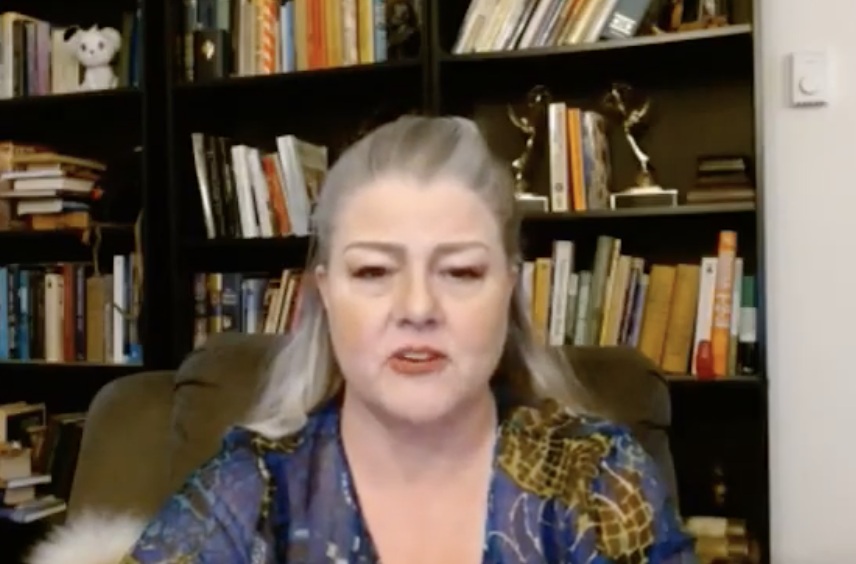 Deborah Armstrong currently writes about geopolitics with an emphasis on Russia. She previously worked in local TV news in the United States where she won two regional Emmy Awards. In the early 1990’s, Deborah lived in the Soviet Union during its final days and worked as a television consultant at Leningrad Television. You can support Deborah’s writing at Paypalor Patreon, or donate via Substack..
Deborah Armstrong currently writes about geopolitics with an emphasis on Russia. She previously worked in local TV news in the United States where she won two regional Emmy Awards. In the early 1990’s, Deborah lived in the Soviet Union during its final days and worked as a television consultant at Leningrad Television. You can support Deborah’s writing at Paypalor Patreon, or donate via Substack..


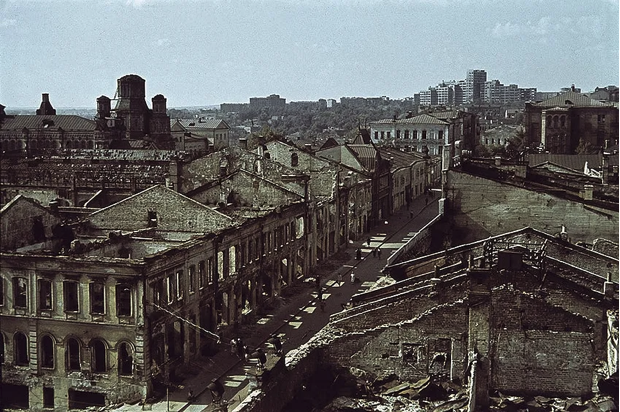

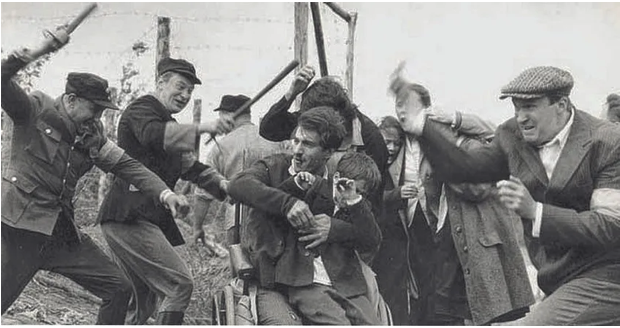
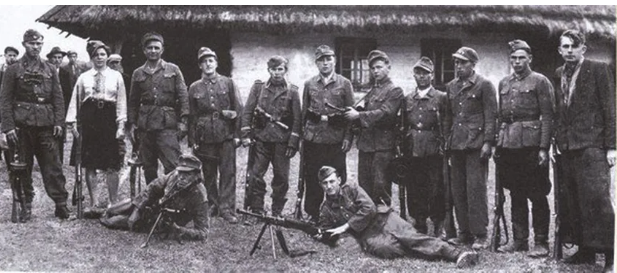

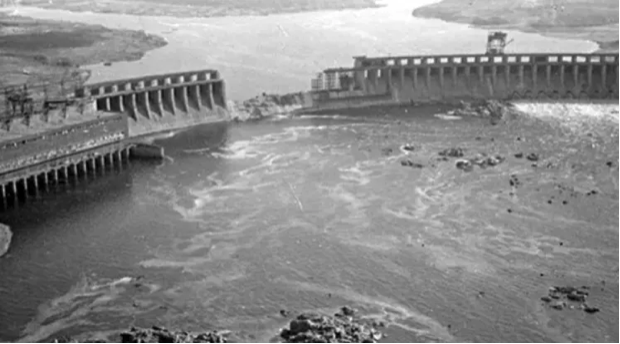
No comments:
Post a Comment